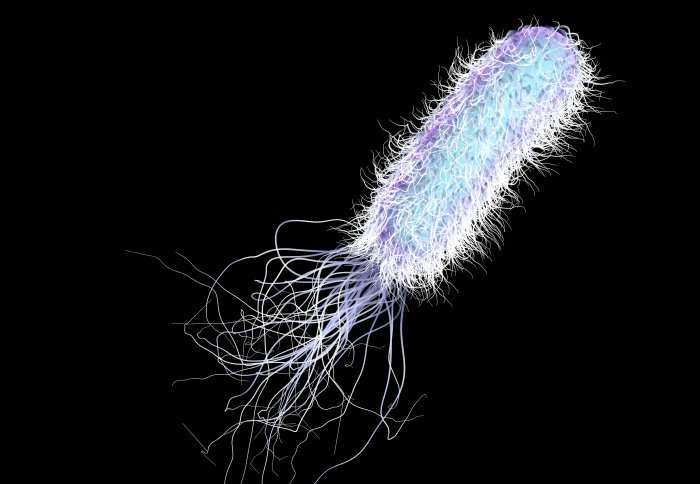Bacteria 'translator' allows bugs to talk to each other for first time

Scientists have designed a type of translator that allows different types of bacteria to 'talk' to each other.
The findings, from scientists at Imperial College London, allow bacteria that don't usually live together – such as those that normally live on the skin, and those that live in the sea, to communicate.
The research, published in Nature Communications, could pave the way for engineering new bacteria systems to aid a number of processes, such as producing green energy.
Dr. Guy-Bart Stan, co-lead author from the Department of Bioengineering, said: "In nature, bacteria happily communicate and cooperate with other bacteria they know and recognise – for instance brewing is sometimes only possible via different bacteria and yeasts working together."
Dr. Karen Polizzi, co-lead author from the Department of Life Sciences, added: "However bacteria only 'talk' with other bacteria they are used to working with. If you take bacteria that don't interact in nature – such as those from the soil and those from the sea, they don't communicate, as they are simply not speaking the same language."
She continued: "But by developing a new translation system, we have shown we can efficiently enable different bacteria communities to speak to each other. This creates the possibility of artificially engineering very complex systems, with multiple bacteria coordinating their actions to carry out complex tasks. We could use this to produce everything from biofuels to composite biomaterials."
Opening communication channels
The findings aid the field of synthetic biology, which involves engineering new biological systems to advance medicine, bioenergy, food production or manufacturing. Advances in synthetic biology to date have included cheaper production of anti-malarial agents, new biofuels, and even microbe-produced spider-silk.
At the heart of the new findings is the system bacteria normally use to communicate, called 'quorum sensing'. This involves bacteria 'speaking' to each other through the release and detection of small molecules. The system allows bacteria to share information about their environment, and the size of their population.
Dr. Nicholas Kylilis, postdoc and study author in the Department of Bioengineering added: "Synthetic bacterial communities can be used to carry out complex bio-computations in a parallel fashion and coordinate complex tasks."This helps them work with their neighbours to coordinate tasks, grow in size, and share food.
However, bacteria only work with microorganisms they know. In the latest research, the team re-engineered quorum sensing systems from various bacterial species found in soil, sea, pond water, and on skin, to create six new communication channels between bacteria.
Encouraging teamwork
The scientists, from the Imperial College Centre for Synthetic Biology, also developed a computer tool to help scientists select the best communication channels to use in their bacterial system.
Dr. Zoltan Tuza, postdoc and author in the the Department of Bioengineering explained: "The computer algorithm helps you chose the right communication channel from the start, rather than spending a lot of time finding out which bacteria understand each other.
The researchers will now focus on encouraging different types of bacteria to efficiently work together to complete tasks.
"We've managed to get them to talk to each other – the next step is encouraging them to work efficiently with each other," said Dr. Stan.
More information: Nicolas Kylilis et al. Tools for engineering coordinated system behaviour in synthetic microbial consortia, Nature Communications (2018). DOI: 10.1038/s41467-018-05046-2
Journal information: Nature Communications
Provided by Imperial College London



















